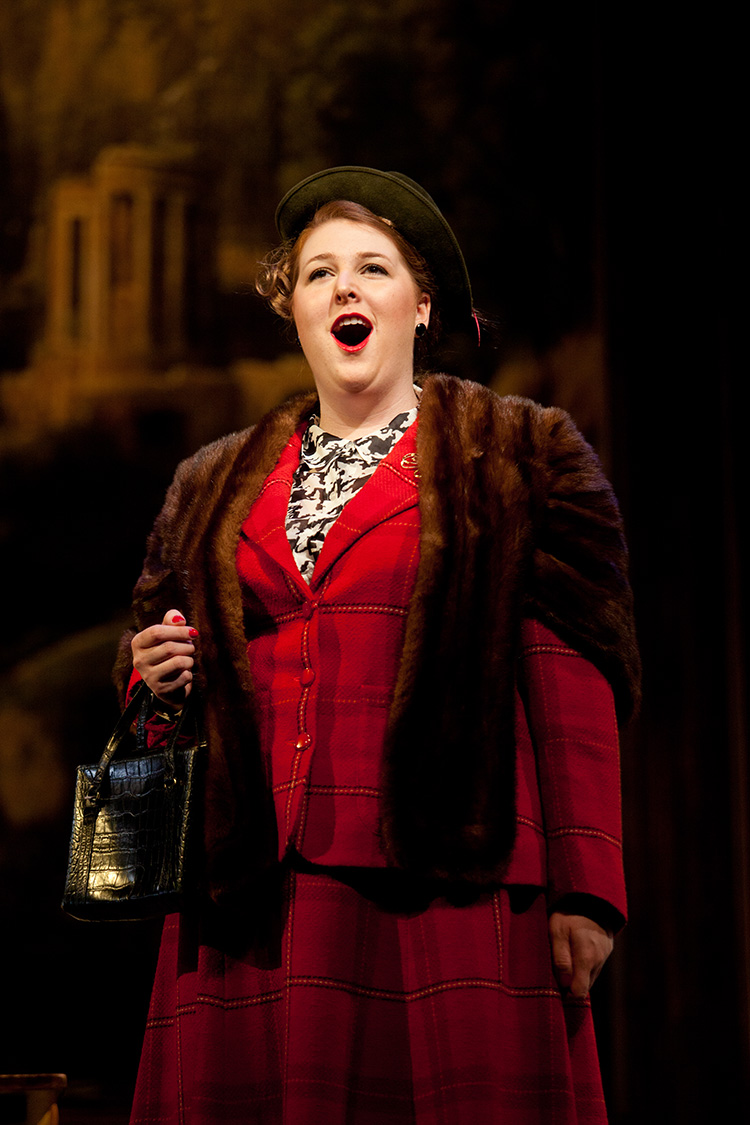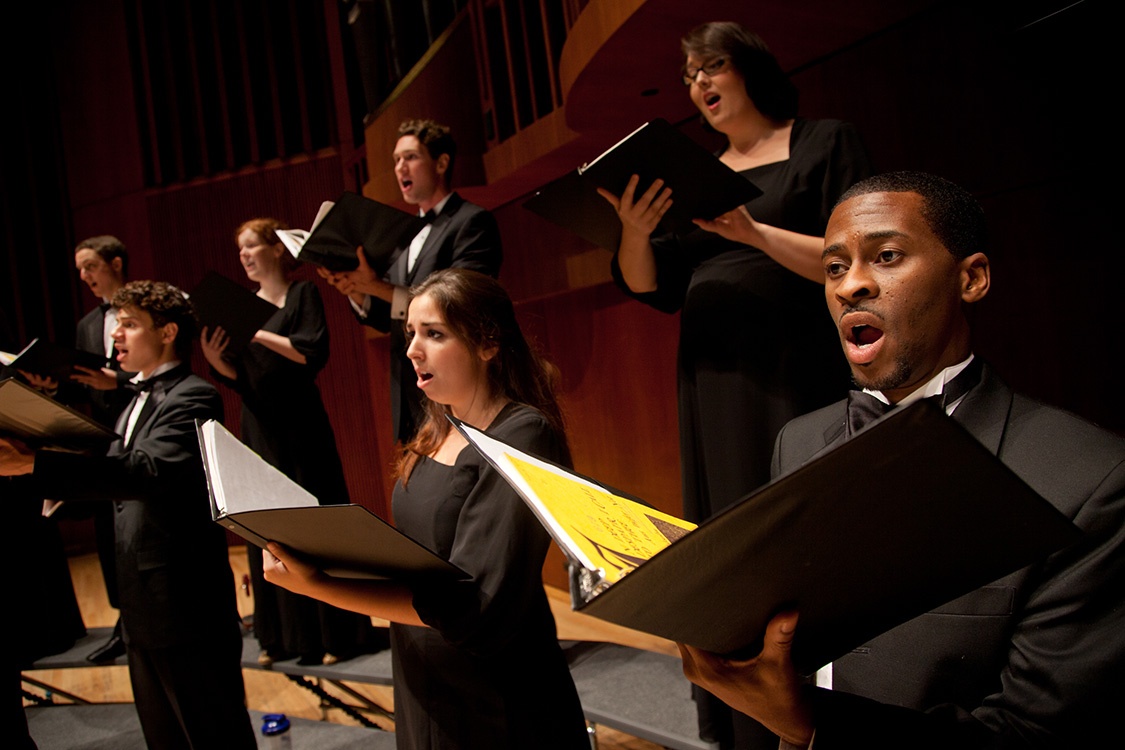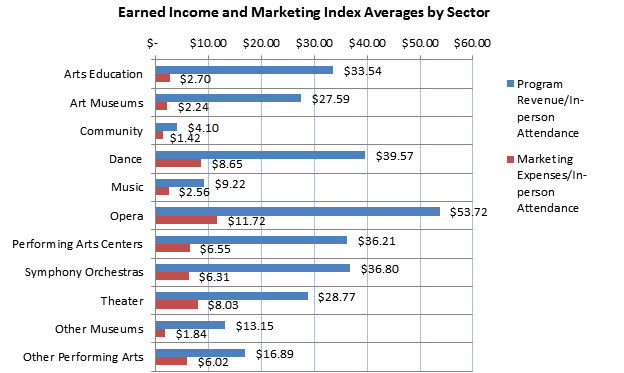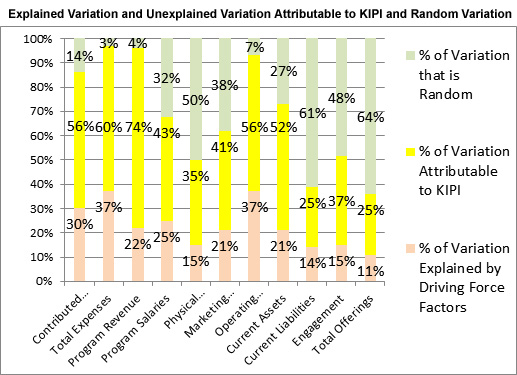First data-driven assessment of the health of the nonprofit arts industry released by SMU’s National Center for Arts Research
SMU's National Center for Arts Research issues its first report on the health of the arts.

Study Identifies Performance Drivers and Determines Value of Managerial Expertise
DALLAS (SMU) – The National Center for Arts Research (NCAR) at Southern Methodist University in Dallas, Texas, released today its inaugural report assessing the health of the nonprofit arts industry.

NCAR is led by faculty at SMU’s Meadows School of the Arts and Cox School of Business in collaboration with the Cultural Data Project (CDP) and other national partners. The vision of NCAR, the first of its kind in the nation, is to act as a catalyst for the transformation and sustainability of the national arts and cultural community. In its first study, researchers were able to determine the extent to which managerial and artistic experience and decision-making impact an organization’s performance.
“NCAR is the first organization in the country to examine the performance of the arts industry from a statistical, data-driven perspective,” said José Bowen, dean of the Meadows School of the Arts. “Not only have we assembled the most comprehensive database and conducted the most in-depth analysis of the industry ever undertaken, but we are sharing these findings freely with the entire industry and providing tools for individual organizations to understand themselves and make changes to improve their performance. This is what makes the project unique – we are not just producing another index of how arts organizations are doing. The ultimate goal of NCAR is to improve the health of both individual organizations and the entire arts and culture ecosystem in the United States.”
To create the inaugural report, NCAR researchers integrated and analyzed data from the CDP and other national and government sources such as the Theatre Communications Group, the National Endowment for the Arts, the Census Bureau, and the National Center for Charitable Statistics. In doing so they created a spatial model of the arts and culture ecosystem of the U.S. The report measures performance on eight different indices: contributed revenue, earned revenue, expenses, marketing impact, bottom line, balance sheet, community engagement, and program activity. For each index, overall averages were calculated, as well as averages by sector, by organizational size, and by geographic area. These were broken down into nine different market clusters, including five cities identified as stand-alone markets (New York City, Washington, D.C., San Francisco, Los Angeles, and Chicago).

NCAR draws on the academic expertise of Meadows and Cox faculty in the fields of arts management, marketing, and statistics. Dr. Zannie Voss, chair and professor of arts management and arts entrepreneurship in the Meadows and Cox schools, serves as NCAR’s director and Dr. Glenn Voss, the Marilyn R. and Leo F. Corrigan, Jr. Endowed Professor of Marketing at Cox, serves as research director.
“In this first report we took a deep dive into eight of the areas of performance identified, and by studying these averages, tried to answer the question ‘all else being equal, what makes one arts organization more successful than another?’ Some of the findings were as one would expect, but we did find some surprises,” said NCAR director Dr. Zannie Voss. “Perhaps more than any other industry, arts organizations are driven by managerial and artistic expertise. Being able to estimate the value of this expertise in an organization’s performance is the single most valuable result of our first study.”
In 2014, NCAR will launch an interactive dashboard, created in partnership with IBM, which will be accessible to arts organizations nationwide. Arts leaders will be able to enter information about their organizations and see how they compare to the highest performance standards in each of the eight indices for similar organizations. The website will also foster public discussion of best practices and solutions and offer a dedicated YouTube channel for video responses, as well as an online resource library with helpful tools and templates.
More than a dozen visionary foundations and individual arts patrons have supported the new center with financial investments, including the Communities Foundation of Texas, M. R. & Evelyn Hudson Foundation, Carl B. & Florence E. King Foundation, Jennifer and Peter Altabef, Marilyn Augur, Molly Byrne, Bess and Ted Enloe, Melissa and Trevor Fetter, Carol and Don Glendenning, Jeanne R. Johnson, Nancy Nasher, Nancy Perot, Bonnie Pitman, Caren Prothro, and Donna Wilhelm.
NCAR 2013 Report - Highlights
A sampling of highlights from the study:
- Arts and cultural organizations earned an average of $22.26 per person who participated in the organization’s program offerings, with a wide spectrum when broken down by sector: from a low of $4.10 for community organizations to a high of $53.72 for opera companies, reflecting the differences in operating models.
- The larger the organization, the higher the percentage of its operating revenue that goes to pay for artistic and program personnel compensation, and the greater the tendency to run a deficit.
- The smaller the organization, the higher the level of expenses it covers with contributed revenue.
- San Francisco had the highest arts and culture dollar activity per capita—$895—followed by New York City and Washington, D.C., at roughly $610 each.
- Organizations in the Los Angeles area have the highest levels of unrestricted contributed revenue covering total expenses, the highest program revenue per attendee, and spend more in marketing expenses to bring in each attendee than other clusters, while Chicago organizations spend the lowest amount to bring in every attendee, followed by New York.

- Organizational age and size (total expenses) boost performance in every case.
- More local, national, or world premieres all lead to higher attendance and higher levels of total engagement.
- Organizations that target children (pre-K – 12) tend to have a larger footprint, offering more programs on larger budgets and attracting more attendance and more total engagement.
- Organizations that spend more on fundraising (including personnel) have higher contributed and total operating revenue, but also more offerings, more total engagement, and higher current assets.
- Population has a positive effect on operating revenue, expenses, and total offerings, but a negative relationship with attendance and total engagement.
- Households with annual income above $200,000 tend to provide more contributed revenue to local arts and cultural organizations and they drive up expenses, but they have no effect on either attendance or program revenue and they drive down total engagement.
- Longer commute times in a community bring down performance on nearly every outcome.
- Attendance is lower as median age in the market increases. It appears that attendance is driven more by those in the lower end of the 25-64 range.
- Having more hotels in the market led to higher performance on nearly every measure.
- More per capita operating revenue in an arts sector translates to higher performance on every measure for organizations in that sector. When there are more competitors per sector, contributions are spread thinner, budgets tend to be smaller, and each organization supplies fewer offerings. However, more competition does not lead to lower attendance or engagement.
- Higher concentrations of larger corporations in the community boost marketing expenses, physical attendance, total expenses, and program salaries. There is a “big company” effect that impacts arts and culture.
- The number of NEA and/or IMLS grants an organization receives has a positive effect on every performance outcome.
Although the performance drivers explain some level of variation in performance measures, there are intangibles, like managerial and artistic experience, that also affect performance. These Key Intangible Performance Indicators (KIPIs) can be measured only after taking into account an organization’s sector, size, location, community characteristics, local cultural policy, etc., and creating a level playing field. There is still some random variation that can’t be accounted for, but NCAR gets as close as possible to measuring how much of an impact KIPIs have on performance. The KIPIs are most valuable as a tool in examining an individual organization’s performance on different outcomes relative to the rest of the field, all else being equal.
About the Meadows School of the Arts
The Meadows School of the Arts, formally established in 1969 at Southern Methodist University in Dallas, is one of the foremost arts education institutions in the United States. The Meadows School offers undergraduate and graduate degrees in advertising, art, art history, arts management and arts entrepreneurship, communication studies, creative computation, dance, film and media arts, journalism, music, and theatre.
The goal of the Meadows School of the Arts, as a comprehensive educational institution, is to prepare students to meet the demands of professional careers. The Meadows School is a leader in developing innovative outreach and community engagement programs, challenging its students to make a difference locally and globally by developing connections between art, entrepreneurship, and change. The Meadows School of the Arts is also a convener for the arts in North Texas, serving as a catalyst for new collaborations and providing critical industry research. It shares with Cox the dual-degree MA/MBA in arts management. For more information, visit www.smu.edu/meadows.
About the Cox School of Business
SMU’s Cox School of Business, originally established in 1920 and named in honor of benefactor Edwin L. Cox in 1978, offers a full range of undergraduate and graduate business education programs. Among them: BBA, Full-Time MBA, Professional MBA (PMBA), Executive MBA (EMBA), Master of Science in Accounting, Master of Science in Entrepreneurship, Master of Science in Finance, Master of Science in Management, Master of Science in Sport Management, and Executive Education.
The school also offers a number of unique resources and activities for students, ranging from its Business Leadership Center (BLC), Caruth Institute for Entrepreneurship, Maguire Energy Institute ,and Global Leadership Program to its Associate Board Executive Mentoring Program and an international alumni network with chapters in more than 20 countries.
Media Contacts:
For media in Texas:
Victoria Winkelman
Meadows School of the Arts
214-768-3785
vwinkelm@smu.eduFor media outside Texas:
Hanna Gisel/Maria May
212-671-5162/5173
hgisel/mmay@resnicowschroeder.com
# # #

